These winter herbal remedies to make now will have you prepared for any seasonal virus that comes your way.
This post may contain affiliate links at no additional cost to you. By making your purchases through the links on this website, IMSL may make a small percentage at no direct cost to you. IMSL only promotes products we use & truly believe in. Please refer to my Privacy & Disclosures for further information. IMSL thanks you for your support!
It invariably happens. As soon as the house is battened down during the fall months preparing for winter winds, the nasties begin to make themselves known.
You know the one’s I’m talking about. Sore throats, coughs, congestion and just about any other seasonal ailment you can think of.
Fall is synonymous with preparation here on the hill. And that includes foraging and preparing my winter herbal remedies so that I can be just that. Prepared.
After all, as the esteemed Mr. Benjamin Franklin say’s …
“An ounce of prevention is worth a pound of cure”
Benjamin Franklin
And in this case, it’s literally worth a pound of “cure” 😂
Although I forage & gather my fresh herbs throughout the growing season for use in my homemade products, tinctures, and remedies, it’s a comfort to know that my apothecary is stocked & at the ready for any seasonal ailment that may come knocking.
ADDRESSING DIET & LIFESTYLE
It’s important to note that we cannot rely on herbs and plants alone to keep us healthy during the cold winter months. Taking a moment to reflect on the following lifestyle factors, which play an important role in whether we remain healthy or not, can make all the difference.
Making simple lifestyle adjustments can give your immune system the boost it may need to stay healthy all winter long.
VITAMIN D
Hibernation during the winter months greatly reduces our vitamin D received from sunlight.
As much as I dislike the cold during late fall and winter months, taking a brisk 20 to 30 minute walk outside allows me to breath in fresh air while getting a bit of exercise in, get my daily dose of vitamin D, AND helps me with my SAD (seasonal affective disorder) issues. WIN, WIN!
IMPORTANCE OF FRESH AIR
With the cold temps our houses are buttoned up tight. Fresh air is at a deficit. Cold kills germs and warmth incubates them.
Knowing this, replacing the stale warm environment we create in our homes each winter with as much fresh air as possible will not only decrease germs, but also increase oxygen levels!
So give those windows a crack now and then, open a door every once in a while, and let the fresh air in!
IMPORTANCE OF DIET
When it gets cold outside and the temps dip ever lower, inevitably our diets change. We begin to eat a bit heavier, often reaching for treats filled with sugar or high in carbohydrates which the body processes as sugar. One’s that feel as though they “feed the soul” as we often are affected by those winter blues. Hot chocolate anyone?
Diets high in carbohydrates & sugar may be limiting the ability of your body to ward off viruses. Sticking to diets full of brightly colored vegetables & fruits will aid it in working at peak performance.
What we put in our mouths matters, especially to our immune systems.
REGULATING STRESS & SLEEP
When under stress, the immune systems ability to fight off viruses and infections is greatly reduced. Not only does the stress hormone, corticosteroid, suppress the immune systems effectiveness by lowering the number of lymphocytes, it can also lead to making adverse lifestyle choices as many will reach to alcohol or smoking for relief.
Lack of proper sleep can also tax the immune system. People who sleep less than 7 hours each night are 3x more likely to catch a cold. Get your proper rest by consistently retiring each night at roughly the same time, reduce your exposure to light, especially screen light, and avoid caffeine, especially later in the day.
By addressing a few diet & lifestyle habits, any winter herbal remedies you make now will work more effectively in the body.
As I’ve stated many times, before beginning any new herbal routine, do your due diligence & consult with your primary care physician if necessary. Always consult with your medical practitioner when considering home herbal remedies for children under the age of 2, are pregnant or trying to become pregnant, or are allergic to the plant family in question. I am not a doctor, but simply an herbalist with over 20 years of experience. I encourage you to research, research, research, and educate yourself prior to taking any home remedy.
DISCLAIMER
Recommendations and or suggestions made by this blog regarding husbandry and or herbal remedies etc. are not meant to replace solid advice from qualified professionals. None of the information on this blog has been evaluated by the FDA. Products or remedies mentioned are not intended to diagnose, treat, cure or prevent disease. Please do your due diligence. Research, talk to qualified professionals and proceed at your own risk.

HERBS & PLANTS TO FORAGE & GATHER
Now is a great time to forage for most medicinal herbs and plants. Why? It’s all about energy. Plant energy.
Winter has a way of forcing us to slow our pace, to turn inwards, to rest. Plants do the same. Once their growing season comes to an end, and their leaves begin to fall, they to begin to turn inwards, to prepare for the long sleep of winter.
Plants energy is shifted from producing (flowers, leaves, growth) to strengthening its root systems, which in turn allows them to successfully survive the coming winter months.
In most instances, it’s this energy or “strength” that we want to harness when foraging for roots, bark, berries and nuts. Especially when we intend to utilize them for their medicinal properties.
When foraging, gather only those plants, roots, and herbs which you are confident have not been sprayed or suffer from roadside treatments. Take only what you need, and leave the rest for our woodland friends 😊
HERBS & ROOTS TO FORAGE & GATHER FOR HERBAL REMEDIES
Before winter sets in, now is the time to forage & gather any of these herbs that you’ve not already gathered for use in the making of your herbal remedies. Here are some amazing options.
BLACKBERRY ROOT
This is one root that I have yet to harvest and use. However, after researching, you can be sure it will be in my home apothecary soon!
“European blackberry plants are used for herbal medicinal purpose such as antimicrobial, anticancer, anti-dysentery, anti-diabetic, antidiarrheal, and also good antioxidant.”
NCBI
To harvest blackberry root, harvest either before it flowers in the spring or in late fall. Remove the roots from the plant, rinse, and peel the bark away. Dry well and store in an air-tight jar.
This old remedy was used to treat diarrhea, hemorrhaging, & vomiting. The high levels of tannins found within the roots act as an astringent (reducing mucuous accumulation), purifying, diuretic, and as a restorative.
Typically, the root is made into a tincture or syrup, and the leaves (harvested & dried) used in tea making.
BURDOCK ROOT
Although technically an edible root vegetable native to Northern Asia, is a powerhouse of antioxidants, & offers many medicinal benefits to any home apothecary.
Typically used as a diuretic and digestive aid, burdock roots medicinal properties are now being discovered once again.
Sharing Is Caring & I Thank You For It ❤️
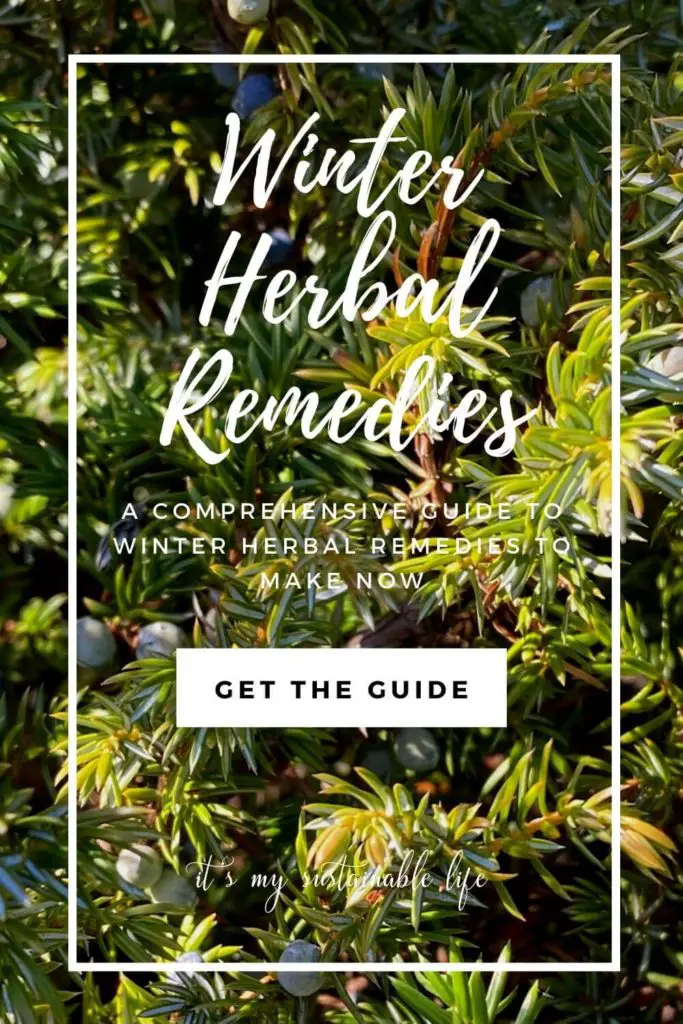
CHAMOMILE
These pretty little, daisy-like flowers are a wonderful addition to any home herbal garden. Just don’t let their size fool you!
Chamomiles flowering tops boast powerful anti-inflammatory properties, which when used either internally or externally, promote overall relaxation, restful sleep, ease tension of both headaches and muscles alike, aid with menstrual cramping, ease seasonal virus symptoms, and even improve our skin and winter “blues”!
Harvest the flowers during the height of the growing season, dry completely, and store in an air-tight container for use in tea preparations, in powder form as a wonderful addition to homemade baby powders, and as a unique infused oil to add to sleep balms.
A word of caution for those who suffer from ragweed allergies, you may want to take a pass on this one 😊
CHERRY BARK
Cherry bark can aid with colds, coughs, bronchitis & respiratory issues. Working as an expectorant, cherry bark has a powerful antitussive (cough suppressing) ability, easing dry spasm type coughs. It’s astringent, antispasmodic, sedative, and bronchodilator actions all work to dry mucous while increasing expectoration and opening airways.
The easiest way to harvest cherry bark is to prune some large branches. While still fresh, peel away the top layer of bark. It’s the bark layer underneath the initial top layer we are looking for. This internal layer of bark is what is utilized for home remedies.
Cherry bark can be made into a cough syrup or tea to ease coughs & colds, or even into a rinse or cream to aid in the healing of tired, puffy eyes and skin problems such as eczema.
Once the bark has been harvested, dry or dehydrate completely and store in an air-tight container.
CHICORY ROOT
This hardy perennial plant is commonly found growing along roadsides throughout North America. Its roots, very similar to that of dandelion, is where its powers lay.
Throughout the ages, chicory root has been used as a diuretic and laxative, assisting with constipation & upset stomachs, as an aid with fevers, jaundice, and to help increase bile flow, making it perfect for use with treating gallstones.

Its roots have been shown to possess antibacterial, anti-inflammatory properties as well as being slightly sedative, slowing the pulse and lowering blood sugar levels.
Once the root is harvested be sure to rinse thoroughly and allow to completely dry or dehydrate before storing in air-tight containers.
DANDELION ROOT
Dandelion flowers and roots are both utilized here on the hill for the making of dandelion salve as well as tinctures, and the leaves harvested in the early spring eaten in salads or cooked.
Considered a bitter herb, dandelion is both a liver cleanser as well as a diuretic, and is also used for the following….
“Dandelion is used widely for everything from detoxification & cleansing the blood to treating common ailments such as loss of appetite, headaches, and weight loss, to name just a few. The oil made from the dandelion flower (an infusion) is known for its pain relieving qualities (anodyne) as well as it’s moisturizing (emollient) benefits.”
IMSL
Foraging the flowers in the spring, they are dried and stored for use. The roots can be dug up in the spring prior to flowering or in the fall before winter. Rinse them well and dry completely prior to storing in an airtight container in a cool dark area.
Dandelion root can be tinctured, aiding in the common ailments listed above or roasted (or not) and made into a tea.
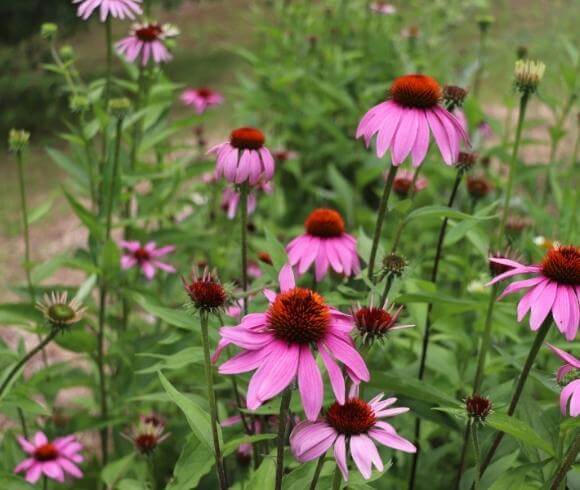
ECHINACEA
Echinacea is a plant that does double duty in my garden, adding beauty and color to my bouquets and medicinal benefits to my medicine chest. This potent plant has been shown to help improve and support the immune system, blood sugar levels, anxiety, inflammation in the body, and skin health. I’d say this powerful plant accomplishes more than double duty 😊
Being able to harvest your own echinacea root takes some patience. Three year’s worth of patience to be exact.
By waiting for a full three year growth cycle of the plant will ensure the plants roots are large enough to harvest and that they are at their full strength. Harvest besfore a killing frost, clean well and dry. Store in an air-tight container. The roots are then most commonly used in making tinctures which are best taken at the onset of any illness.
The roots are not the only useable part of the plant, however. It’s flowers, leaves, and stems can all be utilized, most often in tea’s or herbal infusions.
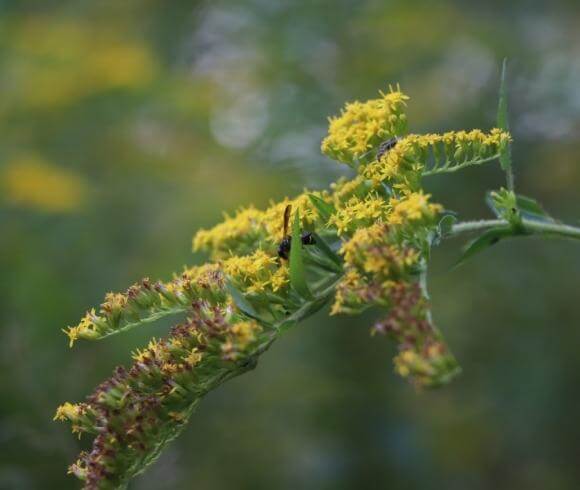
GOLDENROD
Unfortunately, this wonderfully medicinal herb has gotten a bad rap by those who suffer seasonal allergies. Ripening the same time as ragweed, goldenrod is often blamed for allergy flairs when indeed it’s all ragweeds fault 😅
Goldenrods a natural dye, is medicinal, & offers many healing properties. All parts of this healing plant can be utilized.
Goldenrod flowers are harvested at the height of their growing season, dried or dehydrated, and then either stored in an air-tight container in a cool dark area, tinctured or infused in oil much like I do my dandelions.
Goldenrod is often used for urinary issues, muscle and arthritic pain, or treatment of respiratory issues stemming from seasonal allergies to seasonal viruses.
MARSHMALLOW ROOT
Marshmallow roots magic lays in its mucilage. Mucilage is the gelatinous substance found within the plant. This folk remedy has been used throughout history for digestive, respiratory, throat, and skin conditions.
Taken as a tea (yum!) or made into tinctures or capsules, marshmallow root is an effective home remedy for making dry coughs productive, & easing issues related to bronchitis.
Harvest the roots in the fall months, rinsing & drying well. Once completely dry, store in an air-tight container.
MULLEIN
Mullein has been used for its medicinal properties since ancient times. Recently, however, mullein has regained popularity, and for good reason.
Mullein’s flowers, leaves, and roots are all utilized in making home remedies. some issue’s mullein can aid with are listed below….
- Pulmonary Issues
- Inflammatory Diseases
- Asthma
- Spasmodic Cough
- Diarrhea
- Migraines
- Earaches
Mullein’s dried flowers & leaves can be infused into oil for earache relief. The dried leaves are extremely helpful for any type of respiratory or lung issue, often taken as a tea or an herbal infusion. Mullein root can be tinctured & aids in relieving seasonal viruses.
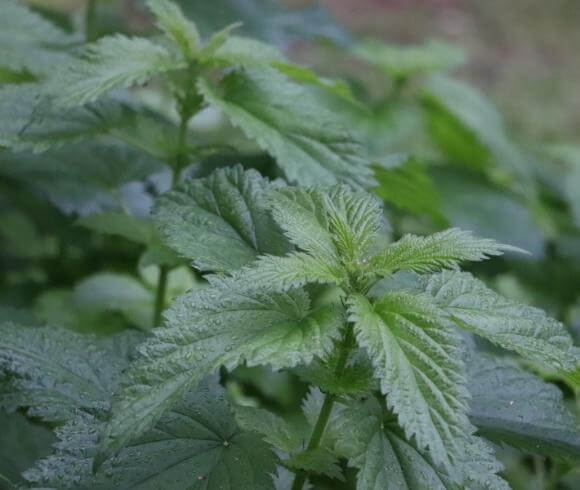
PINE NEEDLES & PINE BARK
Pine is everywhere. Well, at least here in the NE. And fortunately for us, a very easy remedy to identify and use. If you haven’t already, be sure to take a look at my in-depth guide to pine, “Pine Needle Tea {How To Identify, Forage, And Use}.
Pine is always on my list of plants to forage & harvest. Why? Because pine is…..
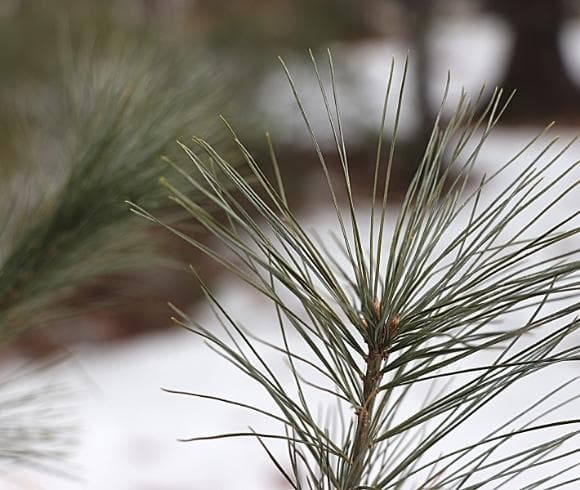
Not only chuck full of vitamins C & A, white pine contains many different acids, essential oils (terpenes, monoterpenes, sesqueterpenes), resin, & starch. The pine needles also boast of a compound referred as alpha or beta pinene. This compound acts naturally as a decongestant and has anti-inflammatory, antibacterial, antimicrobial, and anxiolytic properties.
— IMSL
STINGING NETTLE
The esteemed herbalist, Rosemary Gladstar, refers to nettle as “one of the highest sources of digestible iron in plant form” (Gladstar, 1993, p. 29). For me, stinging nettle is my green friend that just keeps on giving.
Known widely in the herbalist world, nettle is deeply nourishing, assisting the overall health of the body, in both men and women.
This supportive herb promotes healthy function of kidneys, liver, digestive tract, enlarged prostate, is rich in nutrients including vitamins and minerals (magnesium, calcium, iron), and easily assimilated protein.
Taken as a tonic, an herbal oxymel, tea, or used in recipes, stinging nettle offers a plethora of support. Especially for women of all stages of life. Often utilized for uterine health, nettle can offer ease of menstrual issues, including menopausal symptoms.
Used in salves and creams, this herb can ease issues with skin, including eczema.
Its name in large part stems from the “stinging” hairs that grow profusely on the plants leaves. So when harvesting, cover up! Wear long pants, shirts, and gloves to protect you from its biting sting. Interestingly, once processed, the “hairs” are no longer an issue.
Stinging nettle’s roots (made in tinctures), and leaves (used for all other applications) are used. Harvest from the early spring months when this green plant begins to emerge all the way through the first frost.
For long-term storage, dry or dehydrate and store in an air-tight container.
THYME
Yes, you heard right, good ole thyme, garden thyme that is 😁. When I’m suffering from sinus or chest congestion, nothing works better than a cup of thyme tea.
Containing natural chemicals that may help fight bacterial & fungal infections, thyme helps relieve coughs, calms the nervous system, and boasts antioxidants & vital vitamins and minerals essential to our bodies.
TULSI (HOLY BASIL)
Tulsi has been referred to as an “herb for all reasons”. And for good reason 😊
In Ayurveda, holy basil, a truly amazingly “grounding” and adaptogenic herb, has been regarded as the go to herb of preference. Treating issues with inflammation, bacterial infections & viruses, as well as reducing pain, & fever, this herb definitely has it all. Including antioxidant qualities.
Harvest the leaves and dry thoroughly for use in tea (for daily health), as an oral mouthwash, & as a tonic (tea/honey used as a nervine), in powder form (infuse with honey or ghee and taken daily), and even eaten in your favorite salads and meals.
Harvest the leaves throughout the growing season, dry well, and store in an air-tight jar for use throughout the year.
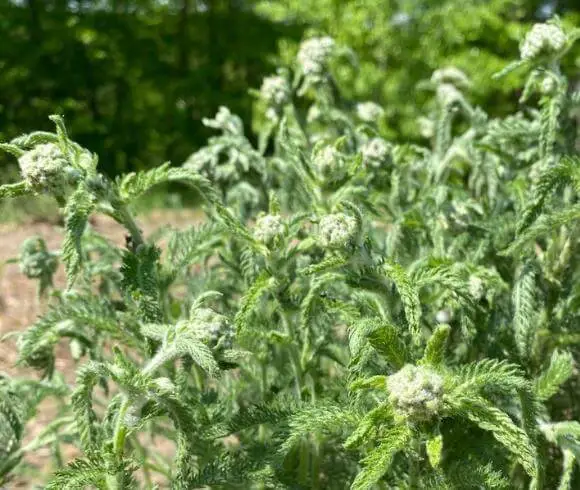
YARROW
Yarrow, referred throughout time as the “witches” herb may one be the most versatile herb we gather here on the hill. Commonly considered the “first aid” plant, yarrow aids in “Treating everything from minor nosebleeds to “bruises to the bone” (falls, strains, pains, ligament issues, shin splints, & bone spurs).”
Assisting with issues blood related (cuts, clotting, and menstruation), yarrow should be in any home medicinal cabinet. Feeling under the weather with seasonal viruses? Brew up a cup of yarrow tea or take in tincture form to “promote sweating and help to reduce & break a fever, and ease sore throats, & coughs”.
To harvest, gather the feathery leaves & flowers and dry completely. Store the dried material in an air-tight jar in your home apothecary cabinet. Should you need it in powder form (great for clotting wounds or making your own capsules), simply grind the dried material in your herb or coffee grinder.
BERRIES TO FORAGE & GATHER FOR MAKING HERBAL REMEDIES
Depending on where you reside, picking beneficial & medicinal berries may be during the summer or fall months. Below are some of my favorites to forage & gather.
ELDERBERRY
Elderberry may be one of my all time favorites to forage & gather for my herbal remedies. Elder flowers and berries are medicinal, however, the leaves, bark, and seeds are considered toxic.
Once the ripe, dark berries have been harvested, the berries can be frozen if desired. They are easily thawed and used in the making of both tinctures or syrups.
Elder flower is highly nutrient dense with many benefits far exceeding just the typical seasonal viruses aid it offers. My 14 Elderberry Benefits goes in-depth concerning both the elder flower as well as the berry itself.
Suffice it to say, utilizing elderberry in the making of elderberry tincture & elderberry syrup is something I plan and make to have on hand every winter. Both are used as a preventative, and seasonal virus aid.
And plan you should when making elderberry tincture. Elderberry tincture can take anywhere from 4 to 6 weeks soaking in alcohol or glycerin. I prefer to allow mine to remain in the jar at least 6 months before processing.
HAWTHORN BERRIES
Hawthorn berries are the tiny fruits that grow on Hawthorn trees or shrubs. Often these berries are mistaken with rose hips. Like its doppelgänger, hawthorn berries are packed with nutrition, high in antioxidants, and may have anti-inflammatory properties.
Used throughout millennia to treat digestive & heart issues, hawthorn berries may even lower blood pressure.
Hawthorn berries boast a tart, tangy taste with a bit of sweetness making them a wonderful choice for making medicinal syrups.
Gather the berries and dry or dehydrate them completely, storing in an air-tight container.
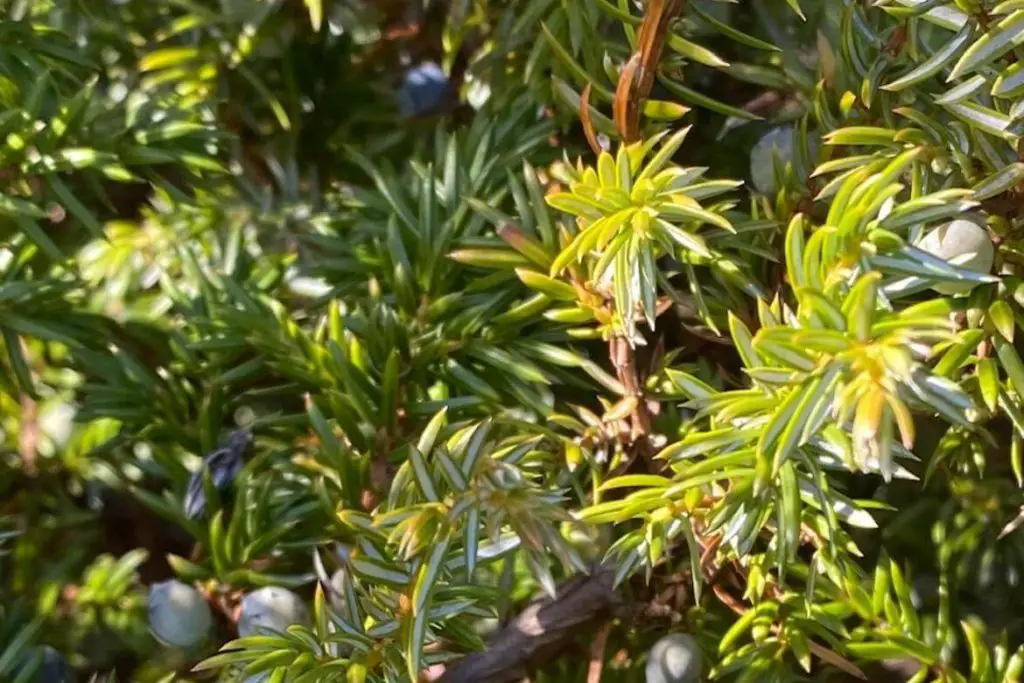
JUNIPER BERRIES
Each fall I love to gather juniper branches once the berries have begun to turn blue for decorating my window boxes for winter and also for harvesting the berries themselves for use both medicinally and for culinary purposes.
Juniper is known widely as the traditional flavoring you find in gin, but they offer so much more!
Juniper berries are high in nutrient content, offer anti-inflammatory & antioxidant effects, are antibacterial and anti-fungal, could promote heart health, and may have anti-diabetic properties!
Juniper makes an amazing base for making salves or creams for skin issues such as eczema, help with infections (think bronchitis), eases digestion issues (heartburn, bloating, & gastrointestinal issues), and aids with urinary tract infections, and kidney issues.
They are also an amazing addition to your culinary efforts! Think flavoring for casseroles, marinades, a delicious addition to stuffings & meat dishes, and even in sweet offerings like fruitcake!
ROSE HIPS
Rose hips are one of my favorite berries to forage each fall. So much so that I’ve dedicated an entire article to just that, Foraging Rose Hips {Identify, Harvest, And Use} should you want an in-depth look at how to forage & use.
Rose hips are the fruit or berry that’s left on the bush once the flower has past. Typically they are red or orange in color. They are also amazingly high in Vitamin C & antioxidants.
Finding wild rose hips is fairly easy to do as they have few imposters, none of which are harmful in any way.
Waiting until after the first few frosts will aid the hips in sweetening up a bit. Gently pulling the hip from the stem, you will want to dry them completely for long-term storage.
Rose hips are commonly enjoyed via tea {add a teaspoon of dried berries to boiling water and allow to steep for several minutes}, to ease seasonal viruses but can also be enjoyed in many other ways. Syrups, jams & jellies, and even cocktails are just a few suggestions!
WINTER HERBAL PREPARATION OPTIONS
With some thought as to how you want to use your herbs, roots, and berries and for what it is you will be using them for, will determine which preparation you will be making.
Realize that many of these preparations take time, thus “the making now” in the title 😊 Read on for your options, simple how-to instructions, and recommended time for each to be made.
BITTERS
Bitters have been in most Grandmother’s healing cabinets forever. Used to treat viruses and illness as well as flavorings in cocktails. Its most popular use, however, is to increase appetite & improve digestive issues.
Consider utilizing the following herbs when making bitters…
- Angelica
- Bitter Melon
- Chamomile
- Chicory
- Dandelion
- Gentian
- Ginger
- Orange Peel
- Rose Hip
To make bitters, simply tincture either fresh or dried digestive herbs in 100 Proof Vodka and allow to sit (shaking every few days) for a minimum of 4-6 weeks and up to 6 months. Strain, and store in a dark amber glass in your own apothecary cabinet.
To use bitters, take under the tongue directly, diluted in water, or added to cocktails.
ELIXIRS
Elixirs are an optional way to take your herbs. Basically, they are simply tinctures which have been sweetened while resting or marinating for a prescribed amount of time.
Normally made using brandy as a base (90 to 100 proof) as its easier on the stomach, elixirs are warming to the body and tasty to boot! Note that elixir herbal preparations have a much shorter shelf-life than that of tinctures. Only about 3 years as opposed to indefinite.
To make an elixir, take your herb(s) of choice, brandy with at least 90 to 100 proof, and honey. Add to a jar according to your recipe and allow to rest or sit for a minimum of 2 to 4 weeks or longer, shaking every few days. Strain and use. Store in an air-tight container in a dark cupboard.
HERBAL OXYMELS
Herbal oxymels are made with herbs of choice along with ACV (apple cider vinegar) preferably with the “mother” along with honey.
“Herbal oxymels can be taken straight up or diluted to make fizzies, smoothies, tea, cocktails, and even hot toddy’s!”
IMSL
Herbal oxymels and herbal elixirs are somewhat interchangeable. Well, almost. Not all elixirs are sweetened using honey, which is a requirement for making an oxymel.
My most favorite herbal oxymel? Fire cider. Hands down. Fire cider, if you’ve not heard, is “a warming, invigorating tonic that is a must-have for any home apothecary. This fermented brew is filled with naturally occurring probiotics”, thus amazingly beneficial.
Herbal oxymels are used in herbal medicine to make the medicine taste better. End of story 😊
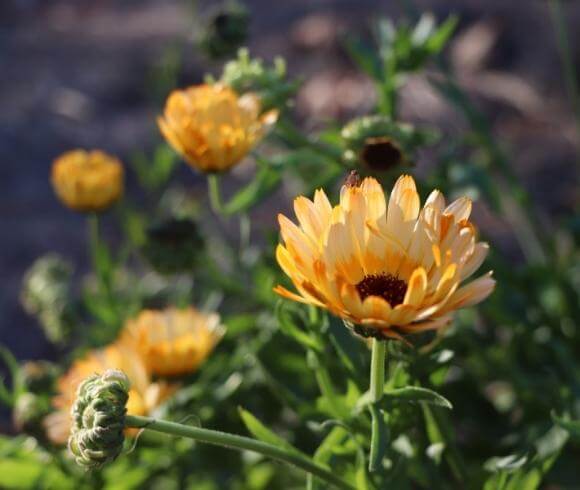
HERBAL OIL INFUSIONS
Herbal infused oils are one of my favorite ways to harness the plants medicinal benefits for use in making my salves, balms, and moisturizers.
To make an infused oil, simply place your herbs of choice into a jar (approximate 3/4 way full) and cover with a high quality, organic oil (EVOO, jojoba, sweet almond, and avocado oil are all good choices) and allow to steep for approximately 4 weeks. Strain the material from the oil, and store in an air-tight container as is or further process into your own personal care product.
A couple of my favorite herbal oil infusions calendula oil and lavender oil, both for skin healing properties. Other options are dandelion oil for making a muscle relief salve, chickweed for skin issues such as eczema, and mullein oil for ear aches and infections.
HERBAL SYRUPS
The most utilized of all herbal preparations here on the hill, however, are herbal syrups. I find these to be the best option for seasonal virus prevention and remedies.
Typically, tasting wonderful, these preparations can be taken directly via the spoonful, but also often make nutritional additions to dressings, marinades, and drinks.
All syrups are made with a concentrated decoction which is cooked down and then sweetened using either honey or sugar. This “cooking down” concentrates the herbs medicinal properties, making it an effective treatment for many seasonal ailments.
Once made, store your syrup in the refrigerator (for up to a couple months time) or add a few drops of Vitamin C powder to extend its shelf life by several weeks time.
One of my favorite syrups to make and use is elderberry syrup. Effective, preventative, and soothing.
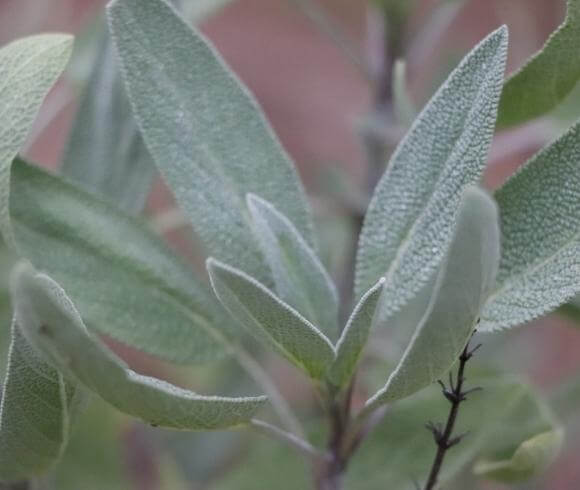
HERBAL LOOSE LEAF TEA
If you have gathered, foraged and dried your herbs you are already there in creating your own herbal tea. Either used individually or in combination, tea is a comfort, nurturing, and medicinal for the body and the soul.
Using your loose leaf herb(s) of choice, you can either utilize a tea ball, tea pot, or even make your own tea bags should you so inclined to steep individual cups.
Another option for using your loose leaf herbal tea is by making an herbal infusion. Infusions use larger amounts of loose herbs and are considered a “long brew” as opposed to a simple cup of tea.
Whichever method you choose, take a moment, sit down, and enjoy a cup 😊
HERBAL TINCTURES
Herbal tinctures are an amazingly powerful herbal preparation made using a solvent. The most common being alcohol with at least 90 to 100 proof strength. Glycerin is an alternative, however, for those who are alcohol intolerant.
There are many reasons why making tinctures is my preferred way to capture & preserve herbs essence. The biggest, however? Shelf life. Tinctures have pretty much an indefinite shelf life, making them stable, efficacious, and easily taken.
There are several ways to make tinctures which I’ve listed in my article, “Herbal Tinctures | Folkloric & Measurement Method”. In a nutshell, simply place your herbs of choice in a jar, cover with your solvent, cover and store in a dark cabinet for a minimum of 4 to 6 weeks being sure to shake the jar every few days. Strain, reserving the liquid (tincture) and store. I like to utilize dark amber jars with dropper tops for this purpose.
HERBAL VINEGAR INFUSIONS
Herbal vinegars are a tasty way to enjoy your herbs. Although not as potent as other herbal preparations, medicinal and culinary herbal vinegar infusions are a nice way to get some added minerals and vitamins.
The shelf life of herbal vinegar infusions is shorter than that of alcohol based tinctures, typically they will only be viable for about six months. However, they make a great alternative for those who have alcohol intolerances.
A few wonderful herb choices (some of which are great at keeping seasonal viruses at bay, relieving symptoms of common viruses, boosting and supporting the immune system, improving digestion) are …
- Dandelion
- Elderberry
- Lavender
- Oregano
- Pine
- Plantain
- Rose Hip
- Rosemary
- Sage
- Thyme
- Yellow Dock
Hopefully this complete guide to winter herbal remedies to make now is comprehensive. Although it can take a bit of research, learning to create a few home remedies will have you well on the way of creating an amazing home apothecary. You never know when you may be in need of it.
What winter herbal remedies will you be making now?
Love, Light, & Laughter ~

Enjoy this article? Please consider sharing it on your favorite social media channel! Want more? Subscribe below for the occasional update with all the “happenings on the hill”!
DISCLAIMER
Recommendations and or suggestions made by this blog regarding husbandry and or herbal remedies etc. are not meant to replace solid advice from qualified professionals. None of the information on this blog has been evaluated by the FDA. Products or remedies mentioned are not intended to diagnose, treat, cure or prevent disease. Please do your due diligence. Research, talk to qualified professionals and proceed at your own risk.

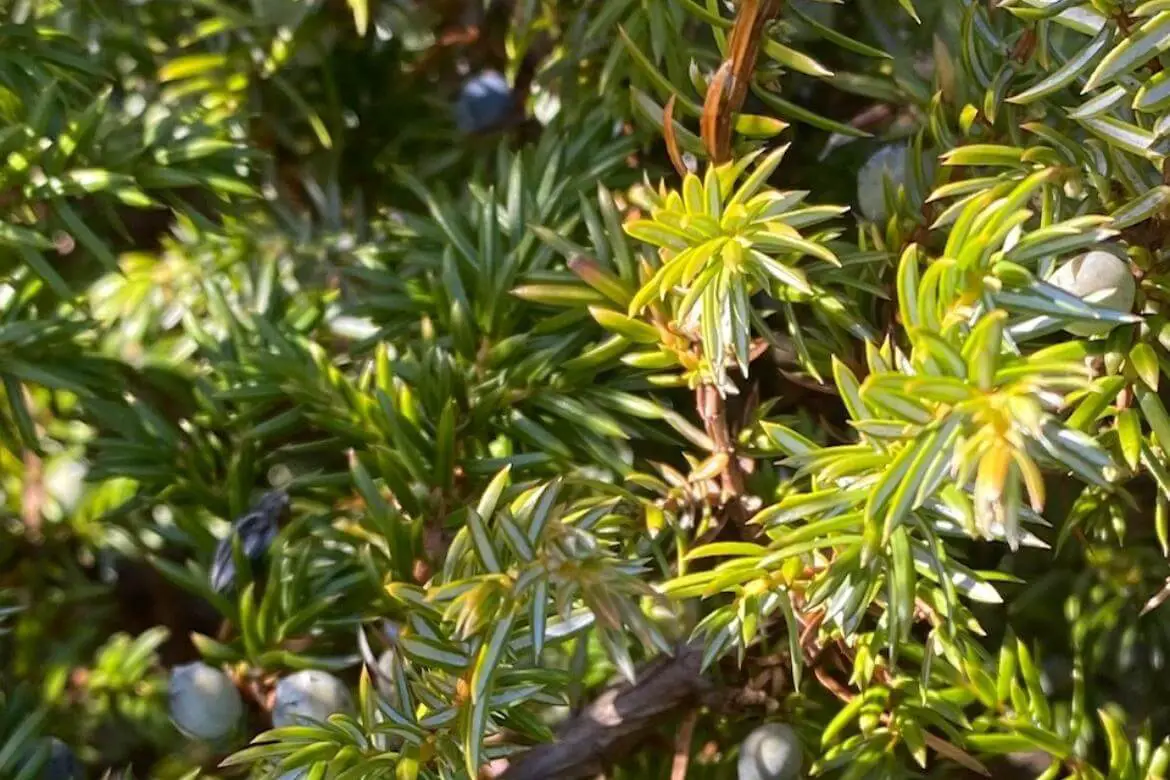

9 comments
What a great way to stay healthy during the winter. These winter herbal remedies sound great! Thank you for sharing.
These are excellent herbal remedies for cold and flu season! I much prefer using herbs rather than over the counter meds.
I love all of these home remedy ideas for the cold season!
These sound like all the best ways to stay healthy through the winter. My daughter loves chamomile and I try to drink m dandelion root tea often. These are the perfect winter herbal remedies!
Thank you for the insightful info! Winter is coming fast, even in Texas!! You have compiled some very useful information!
These WINTER HERBAL REMEDIES TO MAKE NOW are super important with the viruses that seem to be going around again! Any natural approach will always be a better choice than putting chemistry into our bodies! I appreciate your knowledge and how you share it!
I absolutely loved reading about all of these wonderful herbs and remedies. I am a huge fan of all things holistic and prefer natural medicine and preventatives which I have found to work like a charm! Some of these are tried and true herbs that we always have on hand, and I learned about a few new ones reading this today. Thank you so much for sharing about this herbal remedy information!
A WONDERFUL resource to save. Thank you for sharing your wisdom with us on the Homestead Blog Hop 🙂
Thanks Suzan for all this herbal remedy information. I pinned your post. Visiting you from Dare to Share, where my post is Convert Anxiety into Relaxation with a Colorful Cloud Visualization. Happy Nov. and stay germ free.